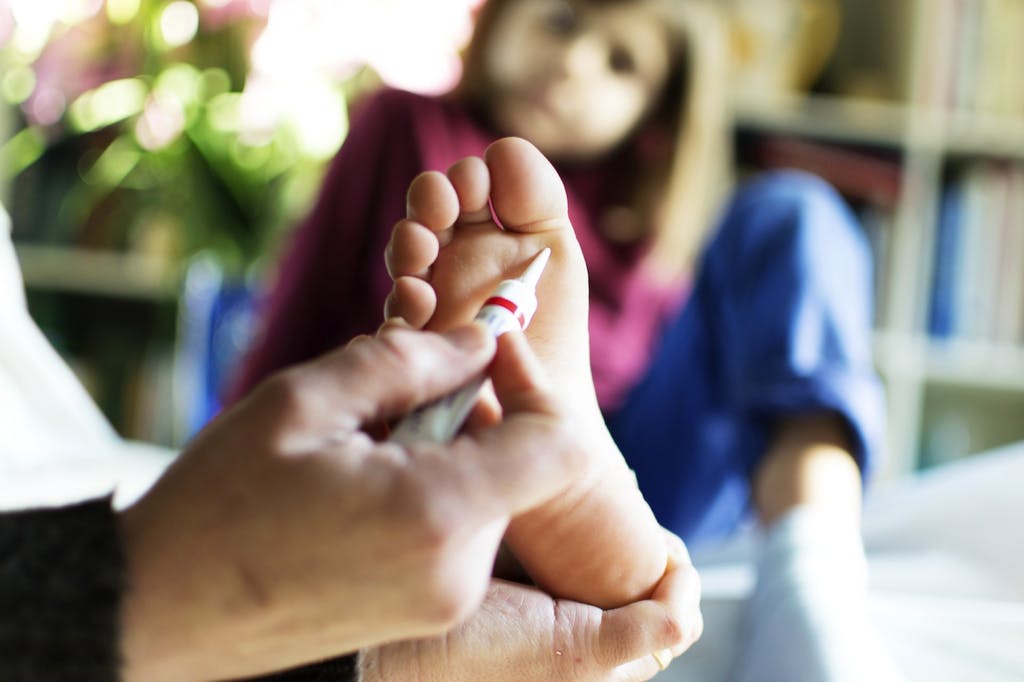Being a family doctor is sometimes the least glamorous job in the world, dealing with the unpleasant, mundane and sometimes just downright boring health issues that exist. However, for the patients suffering from these problems, it’s a big deal and one of the typical common currencies of minor problem I see almost every day in my surgery is the issue of warts and verrucas.
These are caused by a harmless viral infection in the skin called the human papilloma virus (HPV). HPV causes keratin, a hard protein in the top layer of the skin, to grow too much, giving the typical roughened texture of a wart. There are more than 60 different types of viruses known to cause warts. They are increasingly common through childhood and adolescence but then their frequency drops drastically again on reaching adulthood. Warts often look different depending on where they are on the body and how thick the skin is. A wart on the sole of the foot is called a verruca.
In terms of how these look, warts on the hands are found most frequently around the nails and on the fingers and are often shaped like a cauliflower, whereas verrucas are seen most commonly on the ball of the foot as areas of flat, thicker skin with a harder edge around a softer centre.
Fortunately, the treatment of most cases of warts and verrucas is simple — they need no treatment at all and will go away over time by themselves, and if they are not causing any problems this is what I usually recommend.
They are technically contagious, but the risk of passing them on to others is low — you need close skin-to-skin contact and are more at risk of being infected if your skin is damaged, or if it is wet and rough and in contact with roughened surfaces such as found in swimming pools and communal washing areas. If a wart bleeds or breaks up it becomes even more contagious so people with scratches or cuts on the soles of their feet are especially vulnerable. It can take several months for warts and verrucas to develop after infection.
To reduce the chance of passing warts to others, don’t share towels, when swimming cover any wart or verruca with a waterproof plaster and if you have a verruca wear flip-flops in communal shower rooms and don’t share shoes and socks. If you have a wart, try not to scratch it, don’t bite nails or suck fingers that have warts and change your socks every day if you have a verruca.
Fortunately, the treatment of most cases of warts and verrucas is simple — they need no treatment at all and will go away over time by themselves, and if they are not causing any problems this is what I usually recommend. Without treatment, about three in 10 warts have gone within 10 weeks, and most warts will have gone within one to two years, leaving no scar. The chance that a wart will go is greatest in children and young people. However, warts do sometimes last longer, in particular in older people where they can be more persistent and may last for several years.
Treatment can clear warts more quickly but can also be time-consuming and sometimes uncomfortable. The success of any treatment tried depends on the person’s age, how many there are, where they are, and what trouble they cause. There are over-the-counter medicines available from your local pharmacist or your doctor for salicylic acid solutions, and your doctor can also freeze warts and verrucas away with liquid nitrogen. Several treatments are usually necessary before the warts are totally removed.
Various treatments are available in the form of lotions, paints and special plasters that contain salicylic acid and you can buy these at pharmacies, or your doctor may prescribe one. Most need to be applied each day for up to three months and its action is to remove the top layer of skin and the wart — every few days you rub off the dead tissue from the top of the wart with emery paper (or similar) and gradually the wart is burnt off and rubbed away. Do not apply this to the face because of the risk of skin irritation which may cause scarring, and if you have diabetes or poor circulation, you should use salicylic acid only on the advice of a doctor. It may take two weeks or more before you notice any improvement, and treatment may work better if you put a plaster on the wart after applying the acid.
Freezing treatment (cryotherapy) can also sometimes be used, where liquid nitrogen is sprayed on or applied to the wart. Liquid nitrogen is very cold and the freezing and thawing destroys the wart tissue but is not suitable for younger children or for people with poor circulation. To clear the wart fully it can need up to four to six treatment sessions, sometimes more. Each treatment session is a couple of weeks or so apart. This type of treatment can be uncomfortable and a small blister can sometimes develop for a day or so at the nearby skin after treatment. There is also a very small risk of scarring the nearby skin or nail, or damaging underlying tissues such as tendons or nerves.
A very cold spray (dimethyl ether/propane) is also available from pharmacies, which you can apply yourself to warts and verrucas. Your pharmacist will be able to advise if this treatment will be suitable for you, and instruct you in its use.
Unfortunately, although there are dozens of old wives’ tales and folk remedies knocking around for the treatment of warts (I suggest you read Tom Sawyer for one of the best, involving a dead cat) none of these have any effect. If they appear to work, it’s because of the self-limiting pattern of warts that can sometimes make them do so.






Comments